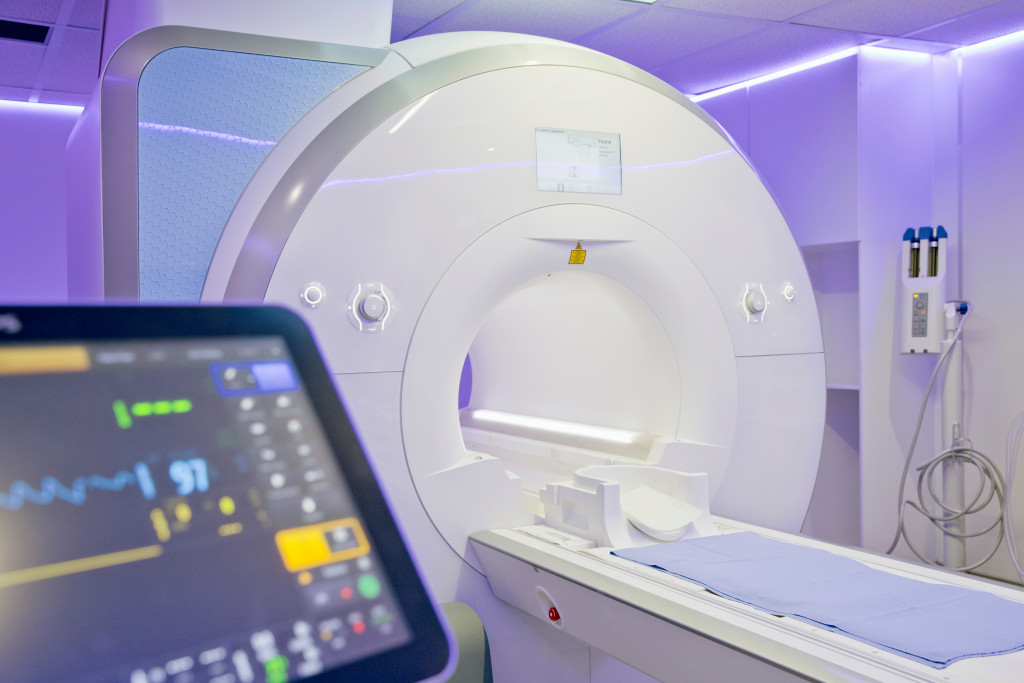- Medical imaging is vital for accurate diagnosis and treatment in pediatric care.
- Traditional X-rays, CT scans, and MRIs are common types of medical imaging used for children.
- Upright MRI is a recent advancement in this field, providing more comfort and accuracy in scanning.
- Safety and comfort should be considered when undergoing any medical procedure.
- Before the imaging appointment, ask questions to understand the process better and advocate for your child’s needs.
When it comes to your child’s health, making informed decisions is key to providing the best care. One area often filled with uncertainty is selecting the appropriate medical imaging for accurate diagnosis and treatment. Understanding these procedures, the latest options like upright MRI, and what to consider can alleviate some of the stress you might feel about the process.
Understanding the Basics of Medical Imaging
Medical imaging encompasses various techniques doctors use to create detailed pictures of areas inside the body. These images allow healthcare professionals to diagnose, monitor, and treat health conditions effectively. For parents, grasping why and when such procedures are necessary for their children’s care contributes significantly to peace of mind.
The Role of Medical Imaging in Diagnosis
When your child is unwell, pinpointing the exact cause is paramount. Medical imaging serves this critical purpose. It helps in revealing internal structures hidden by the skin and bones, offering vital information that cannot be obtained from a standard physical examination.
This process is invaluable in diagnosing everything from broken bones to more complex conditions like internal injuries or tumors. By comprehensively understanding the affected area, doctors can recommend the most effective treatment, preventing guesswork and providing you with clear answers and direction.
Common Types of Pediatric Medical Imaging

Your child’s doctor might suggest several types of imaging, depending on the symptoms and the area of the body that needs examination. Traditional X-rays are often the first step in diagnosing bone fractures. CT scans, on the other hand, provide more detailed images and are used to uncover various issues like infections or internal trauma.
Then there’s magnetic resonance imaging (MRI). Standard MRIs require your child to lie down motionless, and this can be a challenge, especially for kids with anxiety or claustrophobia. However, an advancement in this field is the emergence of the upright MRI, allowing scans to be performed while sitting or standing. This approach not only ensures comfort but also captures images in the natural weight-bearing state, enhancing the accuracy of the diagnosis.
The Emergence of Upright MRI in Pediatric Care
Navigating the world of medical imaging can be daunting, especially when your child’s health is on the line. You want to ensure they’re not subjected to any discomfort or fear. Here’s where understanding the upright MRI becomes crucial. This recent development in medical imaging marks a significant step forward in pediatric care.
Why Upright MRI Makes a Difference
Imagine the struggle your child has to go through, lying still in a confined space during a standard MRI. Now, picture the relief they would feel if they could sit or stand in a more spacious setting. That’s the comfort upright MRI brings. But the benefits don’t end at comfort alone.
The upright MRI scans the body in positions natural to your child, whether sitting or standing. Traditional lying-down MRI methods might miss certain conditions that only manifest when your child is in a weight-bearing posture, such as sitting or standing. This imaging can be especially helpful for assessing spinal or joint problems, providing a clearer and more comprehensive picture for the radiologist to review.
Considerations for Safety and Comfort
When undergoing any medical procedure, safety and comfort are top priorities. It’s essential to discuss any concerns you have with your child’s doctor and the imaging facility beforehand.
For instance, conventional MRI machines use powerful magnets, making it unsuitable for children with metal implants or devices. Upright MRI machines offer a safer alternative in these cases as they do not require the patient to be enclosed in a narrow tube.
Navigating Your Child’s Medical Imaging Process

Stepping into the world of medical diagnostics can feel like venturing into the unknown, especially when it involves your child. However, being prepared and knowing the right questions to ask can transform this challenging journey into a path of empowerment. Here’s how you can be your child’s advocate and support during their medical imaging process.
Questions to Ask Your Child’s Radiologist
Before the imaging appointment, arm yourself with knowledge by preparing questions for the radiologist. You’re not expected to know everything; that’s why asking questions is crucial. Consider queries like:
- “What exactly are you looking for in these images?”
- “How should we prepare for the procedure?”
- “Is there a way to make my child more comfortable during the scan?”
- “When and how will I receive the results and discuss them?”
After the Procedure: Next Steps and Support
Once the scan is over, your role in active participation doesn’t end. It’s time to discuss the results and understand the next steps. Ensure you comprehend any findings relayed by the healthcare team. If medical jargon confuses you, don’t hesitate to ask for simpler explanations.
Moving forward, inquire about any necessary follow-up appointments or if additional imaging tests are required. Understanding the entirety of the process helps in keeping track of your child’s progress and ensures they’re getting the needed care.
Final Thoughts
As you navigate this journey, take comfort in knowing that technology and healthcare have evolved to prioritize not only accurate diagnosis but also the comfort and safety of your little ones. Your care, love, and advocacy make all the difference in ensuring their journey through medical imaging is less daunting and more about the path towards better health.











